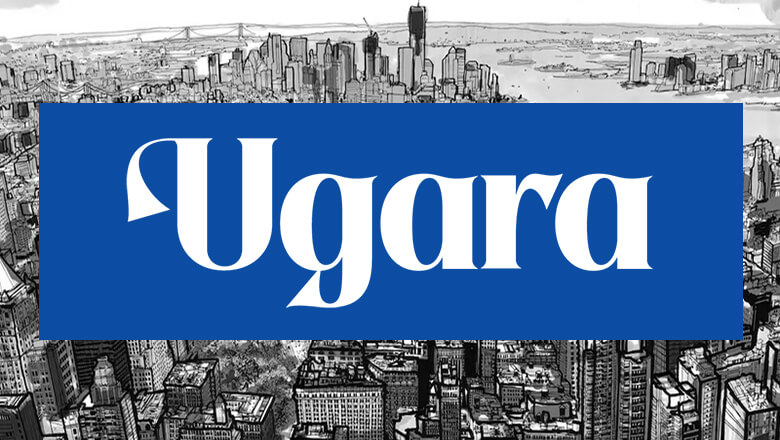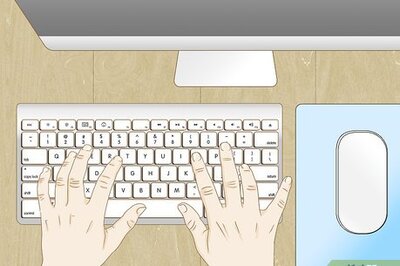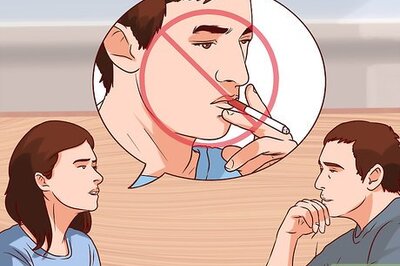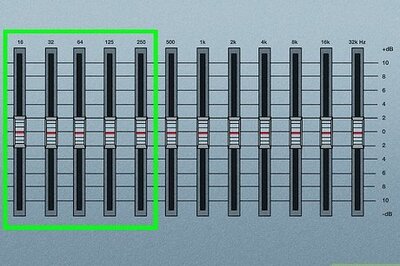
views
Exercises for Getting Rid of Upper Belly Fat
Cardio exercise Laura Flinn explains that “a combination of clean eating, cardio, and resistance exercises will burn fat overall.” Cardio exercise burns calories and fat, boosts metabolism, and elevates your heart rate—which means it’s great for heart health and weight loss. Aim to get 150 minutes of moderate-intensity or 75 minutes of high-intensity cardio per week. According to Flinn, “Unfortunately, we can’t target certain areas for fat loss.” That means you can definitely lose fat in your upper belly, but you can’t force it to happen only in that area—it’ll happen naturally throughout your body. Exercises that fall under moderate cardio include power walking, swimming laps, and dancing. High-intensity cardio is a step up: running, stair-climbing, boxing, and other exercises designed to push your heart and lungs as hard as they can for short periods. If you’re new to cardio (or any kind of intense exercise), talk to your doctor before starting up a routine—especially if you have a health condition that may be affected.
Resistance and HIIT training Resistance training typically involves weights (including weight machines or resistance bands) used to create resistance and, as a result, build up your muscles. It’s a crucial part of weight loss because, as you build muscle, you’ll also burn more calories when you rest. So, be sure to include resistance training in your exercise routine, including exercises like squats, lunges, and push-ups. Additionally, try HIIT (high-intensity interval training), which basically involves bursts of intense exercise broken up by short rest periods. HIIT exercise can increase fat loss, even compared to moderate-intensity exercise!
The yoga “boat pose” Yoga and Pilates can be excellent forms of exercise for weight loss because they can help strengthen your core, build muscle, boost your metabolism, and relieve stress, which can be a big help. The boat pose is a particularly helpful yoga exercise that can help tone your waist and upper belly area. To try the boat pose, do the following: 1. Sit with your legs extended out in front of you. 2. Bend your knees and lift your feet, keeping your shins parallel to the floor. 3. Hold your arms out in front of you (along with your legs) as far as they can go. 4. Maintain this pose for at least 30 seconds, focusing on your breathing while you do. 5. Return to the neutral position to finish the exercise. Do this 8 to 10 times per workout! Other poses that may help include the bridge pose, twisting chair pose, and Pilates moves like leg circles and side leg lifts.
Russian twists Flinn adds that “Core exercises will help tone and strengthen the belly” (even if they don’t necessarily burn fat in that specific area). One core exercise is the Russian twist, which will work your upper abs. You can do this exercise normally or add weights or a medicine ball for a greater challenge! To do a Russian twist: 1. Sit down with your knees bent and feet flat on the floor. It’s easiest to do this on a yoga mat or similar surface. 2. Lean back until you’re at a 45-degree angle with the floor, keeping your bottom pressed to the ground. 3. Hold your hands together above your abdomen, then twist slowly to one side (so your weight is brought across one side of your body). Then, twist to the other side. If you feel like you’re losing your balance at any point, cross your ankles. 4. Keep your legs at a 45-degree angle, and try twisting from side to side quickly (if possible). See if you can do this for a full minute, then stop. Other core exercises include leg raises, bicycle crunches, and mountain climbers.
Upward and side planks Planks—particularly upward and side planks—work the muscles in your upper belly; upward planks affect the deep transverse abdominis muscles, while side planks also work your obliques. Weight loss occurs across your entire body (not specific parts), but these exercises can absolutely help tone your upper stomach! To do an upward plank: 1. Sit down with your arms straight, palms on the floor, and legs straight in front of you. 2. Brace your abs and push your belly up with your palms as though a cord around your belly is pulling you upward. You can also use your heels to get as high as possible. 3. Hold the upward plank pose for several seconds, then return to the neutral position in a controlled manner. One set should contain 10 to 12 upward planks. To do a sideways plank: 1. Lay on one side with the arm on that side out so you can rest your body weight on it. Stack your legs over each other and bend your knees at a 45-degree angle. 2. Push yourself up into the sideways plank position using the forearm of the extended arm that’s braced against the floor. 3. Raise your other arm up toward the sky and hold the sideways plank position as long as you can. 4. Return to the neutral position in a controlled manner. One set should contain 8 to 19 sideways planks.
Diet Changes to Get Rid of Upper Belly Fat
Aim to create a caloric deficit in your diet. Creating a caloric deficit basically means consuming fewer calories than you burn each day. That, in turn, means you’ll need to either eat fewer calories, exercise more, or, ideally, both. Try to burn about 500 calories more than you consume daily; you can lose roughly 1 pound per week at that rate. For example, if you eat 2,000 calories in a day, you should burn 2,500 calories. Remember: don’t cut calories excessively! The goal is to create a balanced deficit through diet and exercise, not cut as many calories out of your diet as possible. Regardless of your weight loss goals, you should still be getting a healthy amount of calories (and food) per day—and if you’re not sure what that is, try consulting your doctor or a nutritionist. Losing even 1 ⁄2 to 2 pounds (0.68 to 0.91 kg) weekly requires too much calorie-cutting to be healthy for most people, which is why it’s recommended to aim for a 500-calorie deficit (or 1 pound (0.45 kg) per week).
Eat a balanced and fiber-rich diet. According to Flinn, a balanced diet means “Lots of fresh fruits and vegetables, at least 25 grams of fiber daily, lean protein, and healthy fats.” Eating foods high in fiber is especially important because it can make you feel fuller (by helping your body digest food), thus making you less likely to overeat. High-fiber foods include fruits (apples, bananas, pears, berries, and avocados), vegetables (broccoli, carrots, brussels sprouts, cauliflower, beans, and potatoes with the skin on), and legumes (peas, beans, lentils, and chickpeas).
Drink plenty of water daily. You need to stay hydrated to lose weight! Hydration keeps your body running, replenishes it after you exercise, and boosts your metabolism as well—which can really help create that calorie deficit discussed above. Generally, try to drink at least 8 to 10 glasses of water daily. You can also get fluids from other beverages and foods (like fruit and vegetables) that contain water. U.S. National Academies of Sciences, Engineering, and Medicine recommends that men get about 15.5 cups (3.7 liters) of fluids a day, while women should get about 11.5 cups (2.7 liters) of fluids daily.
Reduce the amount of sugar and processed carbs you eat. As a nutritionist, Flinn explains that “Limiting sugar and simple carbs should be the priority” when trying to lose upper belly fat and get a smaller waist. Sugar and trans fats in sweets, sugary drinks, and fried or processed food both contribute to weight gain and belly fat, in addition to refined carbs like white pasta, rice, and flour. Limiting sugar and processed carbs doesn’t mean you can’t have a treat once in a while—just make sure the majority of what you eat is nutritious!
Lifestyle Changes to Get Rid of Upper Belly Fat
Find healthy ways to manage stress. Did you know that stress can make it harder to eliminate fat deposits in your body, even when following the usual recommended weight loss strategies (like a healthy diet and exercise)? While you can’t guarantee a stress-free life, you can use techniques like deep breathing, meditation, yoga, and self-care to help yourself better cope with stress. If your stress is constant, even something more intensive, like talk therapy, can help you manage it.
Get 7 to 9 hours of sleep every night. Lack of sleep can lead to higher levels of ghrelin in your body, a hormone connected to increased appetite. It can also lead to lower leptin levels, a hormone that helps create feelings of fullness. In short, lack of sleep can make you feel hungrier and consequently eat more—so aim to get the recommended 7 to 9 hours of quality sleep per night.
Reduce the amount of alcohol you drink. Alcohol can cause weight gain because it’s full of empty calories—meaning it has a lot of calories but no nutrients. If those extra calories from alcohol aren’t burned, they’ll be converted to fat. So, drink as little as possible while trying to lose upper belly fat. It’s still okay to have a drink when you’re at a party or dinner with friends, but try not to overindulge. Once you’ve had one drink, opt for something healthier next.
Quit smoking (if you currently smoke). Smoking can make it significantly harder to exercise on a regular basis (and lose weight). It also comes with several other proven health risks, like asthma and other respiratory diseases. So, if you’re a current smoker and work to quit, you’ll be healthier overall as well as better able to lose weight. It’s challenging to quit smoking, but very possible. You don’t have to quit cold turkey; consult with your doctor to make a plan that will work for you.
What causes you to gain upper belly fat?
Several diet and lifestyle factors can cause abdominal weight gain. While a poor diet and eating more calories than you burn is usually the leading cause of upper belly fat, it can also be more complicated than that. Other causes include: Too little exercise: A sedentary routine can also contribute to burning fewer calories than you eat, which causes weight gain (including in your upper stomach). Lack of sleep: Not getting enough sleep can throw off your metabolism and hormones, causing weight gain in your stomach area. Stress: When you’re stressed, your body releases a hormone called cortisol, and overproduction due to chronic stress can lead to weight gain, particularly around your midsection. Genetics: For some people, their genetics may make them more likely to retain fat around their upper stomach (or other areas, like hips or thighs). Age: As you age, your metabolism slows, which can naturally lead to weight gain and changes in where your body distributes fat. Menopause can also cause women to store fat in the midsection. Hormonal changes: Any type of hormonal imbalance (aside from menopause) can also cause weight gain and possibly increase fat in the upper stomach. Pregnancy: Being pregnant naturally causes you to gain weight—and it’s very normal to retain that weight, especially in the stomach and midsection, even after the baby is born, sometimes for weeks or months.



















Comments
0 comment